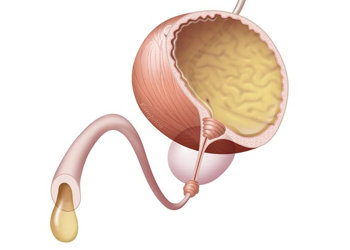 Urinary tract infection is any infection on any part of the urinary system. The term includes infections of the reproductive system (of the testes, epididymis and prostate). This is one of the commonest diseases in men. Its clinical condition ranges from mild to severe.
Urinary tract infection is any infection on any part of the urinary system. The term includes infections of the reproductive system (of the testes, epididymis and prostate). This is one of the commonest diseases in men. Its clinical condition ranges from mild to severe.
Causes and predisposing factors
The microorganisms responsible for UTI are mainly Gram(-) bacteria, followed by Gram(+) bacteria, anaerobic microorganisms and atypical pathogens (Chlamydia, ureaplasma, mycoplasma). However the microorganism most often responsible is Escherichia coli.
Predisposing UTI factors are: short length of the female urethra, menopause, damage of mucosa's integrity in the urethra and bladder, large urine residue within the bladder after urination, dyssynergia of the detrusor-sphincter, vesicoureteral reflux, obstruction (congenital or acquired, anatomical or functional) of the urinary tract, presence of foreign bodies (eg. Bladder stones, urinary catheters), chronic diseases (eg. Diabetes) and poor hygiene.
Classification
Non-specific are the UTIs whose clinical picture is similar regardless of the causative agent. Special UTIs are those whose clinical picture has characteristic clinicopathological findings depending on the causative organism (Mycobacterium tuberculosis, fungi, parasites). Acute urinary tract infections are characterized by the sudden onset of their symptoms. Chronic UTIs exhibit a long duration of their symptoms. A complicated UTI refers to a patient with an anatomical or functional disorder of the urinary tract, which reduces the effectiveness of the treatment, or alternatively it refers to patients with a weak immune system. An uncomplicated UTI refers to a patient with an anatomical and functional integrity of the urinary tract.
Many special situations require specialized treatment, such as pregnancy, childhood, old age and asymptomatic bacteriuria.
Pathogenesis
The most common route of infection of the genitourinary system is when microorganisms enter the urethra towards the prostate and bladder. Several rarer routes are the hematogenous route, the lymphatic route and the through-tissue transmission of inflammation.
Diagnosis
The diagnosis is based on the medical history, clinical picture, and general examination as well as urine culture. Various urine dipstick tests can be used for an initial assessment but are disadvantaged in terms of diagnostic accuracy. Particular attention is required during the collection of urine sample to be sent for culture in order to avoid contamination. The urologist may inform the patient more extensively about it.
Treatment
Τreatment is based on the administration of an appropriate antimicrobial agent depending on the result of the urine culture and antibiogram testing. Initiation of treatment should be avoided without the results of the urine culture and antibiogram. Frequently the clinical picture may direct a urologist to provide empirical treatment. However even in this case, a sample should be given for urine culture before the empirical treatment is initiated. It is possible that the empirical treatment may be changed after receiving the results of the antibiogram. The duration of treatment varies according to the affected region of the genitourinary system. For example, prostatitis in men requires a much longer period of treatment than a simple cystitis in women. A few days after the treatment is concluded, repetition of the general examination and urine culture is recommended, in order to confirm the successful eradication of the responsible microbe.